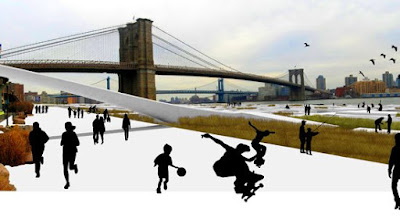
new MONU out now.
related
 Researchers created a map linking different diseases, represented by circles, to the genes they have in common, represented by squares. Related NYT Article: Redefining Disease, Genes and All
Researchers created a map linking different diseases, represented by circles, to the genes they have in common, represented by squares. Related NYT Article: Redefining Disease, Genes and All source
source
 The city is the space between buildings and walls – but this space belongs to whom? To those who conquer it.
The city is the space between buildings and walls – but this space belongs to whom? To those who conquer it.Vito Acconci offers, out of uncountable definitions, probably the most accurate definition about what public space is - but as well one of the most pessimistic. Public space, by definition, is planned by authorities. 'What was built is a production: a spectacle, glorifying the company or the state – or both. Hence space is only borrowed to people. To people who are considered to be part of an organised society, members of the state and potential consumers'. And it's true: public space in a 'western' point of view is a playground of political and economic power: Investor architecture on grounds which are easily got prepared from city's governmental institutions. Flashy brand logos here, shopping malls there. Shopping arcades and canopies on commercially conquered open space. This space between buildings is occupied, conquered, defined, depending on the wishes of city planning. Who will win the match depends on the wishes of the local city planning. Or in an ideal case economy and inhabitants tied for first place.
But the public space are we all, not Acconci's institutions. What is lacking in over regulated cities is only the awareness of this.
One example is Spain: When the Spanish Franco-dictatorship ended in 1975, the recapturing of public space was the first action the population took – in cities as in small villages. Parc Diagonal Barcelona source
Beth Gali, a skater in front of MACBA source

 Archinet's new feature ShowCase presents exciting new work from designers representing all creative fields and all geographies.
Archinet's new feature ShowCase presents exciting new work from designers representing all creative fields and all geographies.
 Sonic Plants: When stroked these technologically augmented plants talk back with musical
Sonic Plants: When stroked these technologically augmented plants talk back with musical 120 second interaction: 2 virtual flocks interact within 3d space to define the light-scape of the installation space via a projection. The aesthetic is a result of the triangulation of the co-ordinates of each entity in the flock and ghosting of the video output.
120 second interaction: 2 virtual flocks interact within 3d space to define the light-scape of the installation space via a projection. The aesthetic is a result of the triangulation of the co-ordinates of each entity in the flock and ghosting of the video output.The deployment of biotechnological interfaces to mediate habitation of outdoor urban spaces is explored conceptually within the context of my thesis project situated on the Chatham Waterfront, Medway, UK. In this project spatial and ecological conditions emerge from the deployment of a modular surface that responds to the surrounding context in it's variations of modular density, scale and intensity of folding. The surface is deployed so that the directionality of the modules attenuates surface flow (flood waters, precipitation, surface flow from the city) allowing diverse microhabitats to emerge between the modules. In time the landscape will gradually be populated by local species according to varying soil conditions created by the surface.interactive landscapes and really great representation. thrilling!
Once populated biotechnological interfaces can be deployed on a large scale to transform the landscape into a vast kinesthetic garden. Habitation of the landscape is based on one's own movement and tactile relationships with the space. Pressure sensitive turfed areas respond to footsteps, long grasses chime to be stroked, artificial scents are diffused through the air at the tap of a leaf whilst vast arrays of LED's change colour in response to your movement.
 near-shore aqua-culture, Image by N.E.E.D
near-shore aqua-culture, Image by N.E.E.D
 Imagesby N.E.E.D
Imagesby N.E.E.D
 Imagesby N.E.E.D
Imagesby N.E.E.D